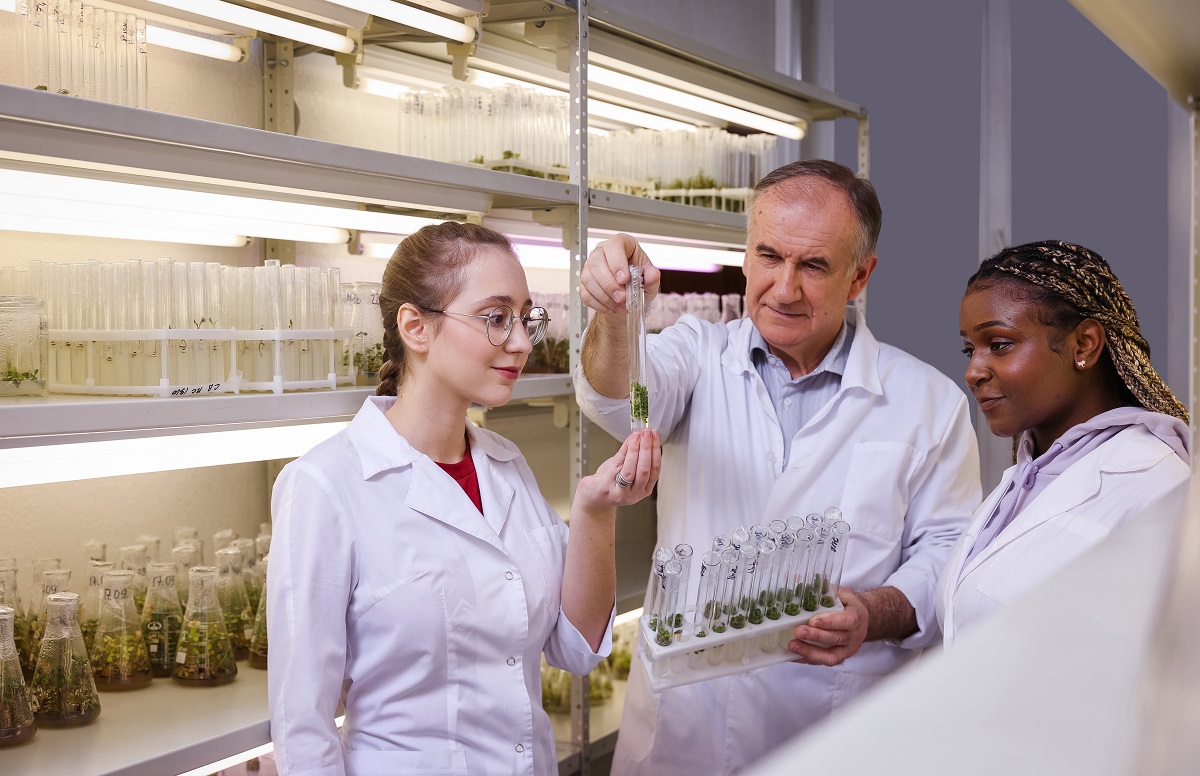The Day of Russian Science in RUDN

According to the statistics of the scientific database Scopus in the RUDN for 2021:
- The number of publications has grown from 2131 to 2293.
- The number of articles in international collaboration has increased from 776 to 856.
- The publication of articles in highly rated journals with the first and second quartile increased from 886 to 1115.
TOP 5 RUDN scientists by citation in Scopus
- Zhanna Kobalava, MD, Professor, Corresponding Member of the Russian Academy of Sciences, Head of the Department of Internal Diseases, Medical Institute;
- Rafael Luque, Associate Professor, Professor, Director of the Scientific Center “Molecular Design and Synthesis of Innovative Compounds for Medicine” of the Joint Institute of Chemical Research;
- Viktor Khrustalev, Doctor of Chemical Sciences, Head of the Department of Inorganic Chemistry of the RUDN, Director of the Joint Institute of Chemical Research of the RUDN;
- Yakov Kuzyakov, Doctor of Biological Sciences, Professor, Leading Researcher at the Center “Smart Technologies for Sustainable Urban Development in the Context of Global Changes” of the Agrarian and Technological Institute of RUDN;
- Eric Van der Eyken, Doctor of Chemical Sciences, Professor, Director of the Scientific Center “Organic Synthesis under microwave activation”.
TOP RUDN scientists by the number of publications in Scopus
- Viktor Khrustalev, Doctor of Chemical Sciences, Head of the Department of Inorganic Chemistry of the Faculty of Science;
- Konstantin Samuilov, Doctor of Technical Sciences, Professor, Head of the Department of Applied Computer Science and Probability Theory, Faculty of Science;
- Rafael Luque, PhD, Director of the Scientific Center “Molecular Design and Synthesis of Innovative Compounds for Medicine” of the Joint Institute of Chemical Research of the Russian Academy of Sciences;
- Fedor Zubkov, Candidate of Chemical Sciences, Associate Professor of the Department of Organic Chemistry, Faculty of Science.
TOP scientific fields by the number of articles in Scopus
- Natural Sciences
- Medicine (Medical Sciences)
- Technologies and Engineering (Engineering and Technologies)
- Social Sciences
- Humanities
- Agricultural Sciences
TOP 5 directions for publications in Q1/Q2 journals
- Chemical Sciences (Chemical Science)
- Biological Sciences
- Mathematics
- Earth and Environmental Science
- Computer Science
8 scientific journals of the RUDN advanced to higher positions in 2021
- RUSSIAN JOURNAL OF LINGUISTICS — Q1 Scopus
- NEW STUDIES OF TUVA — Q1 Scopus
- BULLETIN OF THE RUDN. SERIES: SOCIOLOGY — Q2 Scopus
- EURASIAN MATHEMATICAL JOURNAL — Q2 Scopus
- HIGHER EDUCATION IN RUSSIA — Q2 Scopus
- ECOLOGY AND INDUSTRY OF RUSSIA — Q2 Scopus
- MODERN MATHEMATICS. FUNDAMENTAL DIRECTIONS — Q3 Scopus
- GRAVITATION AND COSMOLOGY — Q3 Scopus
RUDN trains highly qualified personnel. Every year, the share of postgraduate who have defended their dissertations is growing. Let’s note the most popular areas of training in the graduate school of RUDN:
- Clinical medicine
- Economy
- Law
- Historical sciences and archaeology
- Political sciences and regional studies
- Science and Business
In 2021, the university implemented 14 research projects jointly with foreign partners from: Brazil, France, Germany, Czech Republic, Vietnam, China, Taiwan.
Last year, for the first time, the result of intellectual activity, protected in the mode of trade secrets, was successfully commercialized. This is a project of scientists from the Institute of Environmental Engineering, which was sold to an industrial partner in order to introduce it into production activities.
Since 2021, the university has been implementing a new system of grant support for research projects. About 170 million rubles were allocated, 49 applications of research teams of the RUDN were supported.
The University has won and is implementing Mega grants:
- project “Personalized strategy of cancer treatment using neutron radiation based on three-dimensional cell models of the tumor” (Medical Institute, head Andrey Kaprin)
- project “Purushottama Center for the Study of Philosophy and Culture of India” (Faculty of Humanities and Social Sciences, Head Ruzana Pskhu)
Sergey Ivanov, a scientist from St. Petersburg, became the first winner of the RUDN University International Prize for scientific achievements and merits in the field of mathematics in the amount of 5 million rubles.
Egyptian scientist Abdelraouf Masoud Ali, associate professor at the Department of Environmental Management, Institute of Environmental Engineering, has been awarded the 2024 Egyptian State Incentive Prize in Agricultural Sciences.
Inventors from 26 countries and 35 regions of Russia presented more than 500 projects at the XVIII Moscow International Salon of Inventions and Innovative Technologies “Archimedes”. 340 projects belong to Russian participants, and their foreign colleagues — 215. RUDN University initiatives were awarded two gold medals.
Sergey Ivanov, a scientist from St. Petersburg, became the first winner of the RUDN University International Prize for scientific achievements and merits in the field of mathematics in the amount of 5 million rubles.
Egyptian scientist Abdelraouf Masoud Ali, associate professor at the Department of Environmental Management, Institute of Environmental Engineering, has been awarded the 2024 Egyptian State Incentive Prize in Agricultural Sciences.
Inventors from 26 countries and 35 regions of Russia presented more than 500 projects at the XVIII Moscow International Salon of Inventions and Innovative Technologies “Archimedes”. 340 projects belong to Russian participants, and their foreign colleagues — 215. RUDN University initiatives were awarded two gold medals.